When Too Animals Make Babys What Is It Called
Baby creature names can be silly, sweet, and strange. One of the most common baby animal names is a cub, which can exist the name of a baby bear, tiger, or fifty-fifty panda. Calves are the baby animate being names to many every bit well, like baby cows or giraffes. Every species has a name – do you lot know them all? Here are the names of 52 cute baby animals yous may come up across.
Baby Bear: Cub
A baby bear is called a cub, and they are typically built-in during the wintertime, weighing between 8 and 16 pounds. They alive in a den with their developed mother, and they are born completely blind. Their main source of food is their female parent's milk, and they can exist born with several siblings.
Babe Goat: Kid
The baby of a goat is called a kid. While a baby goat can consume hay after about a month, they predominantly drink their mother's milk. These subcontract animals typically live on a farm, merely information technology is safe to divide the infant goat from their mother if they tin can exist canteen-fed.
Babe Cat: Kitten
No list of cute baby animals would be complete without mentioning the kitten, which is the infant of a cat. They consume only their female parent's milk until they are about eight weeks old, at which time they can transition into wet or dry kitten food. They often live with their female parent until they no longer need her milk.
More than Great Content:
Previous Next
Baby Chicken: Chick
Chickens give birth to chicks as their babies. These subcontract animals are hatched from eggs, requiring a male person to fertilize them before they go living animals. Chicks oft are raised separately from their mother before they live in a craven coop as adults.
Baby Cow: Dogie
Another group of farm animals that take their infant animal names for their offspring is cows, which give nascency to calves. Calves tin can be fed their mother'southward milk or formula with silage, haylage, straw, and other proteins. These domestic animals live on farms for the well-nigh function, but they'll go wherever their female parent goes.
Baby Giraffe: Calf
Giraffes give nascence to calves every bit well. Equally an adult, their unabridged diet consists of plants, but the dogie will specifically drink from their mother until they are at least ix months old. They can add plants to their diet as early every bit iv months sometime, only the milk is however necessary for the infant giraffe. The natural habitat of giraffes and their calves is sub-Saharan Africa.
Baby Rabbit: Bunny
A baby rabbit is frequently referred to as a bunny. Immature rabbits (under 7 months old) need to accept consequent admission to alfalfa pellets and hay. They'll also need protein and calcium, though rabbits enjoy many types of vegetables as well. Dissimilar breeds of rabbits alive in different areas, so their habitat can ultimately be anywhere.
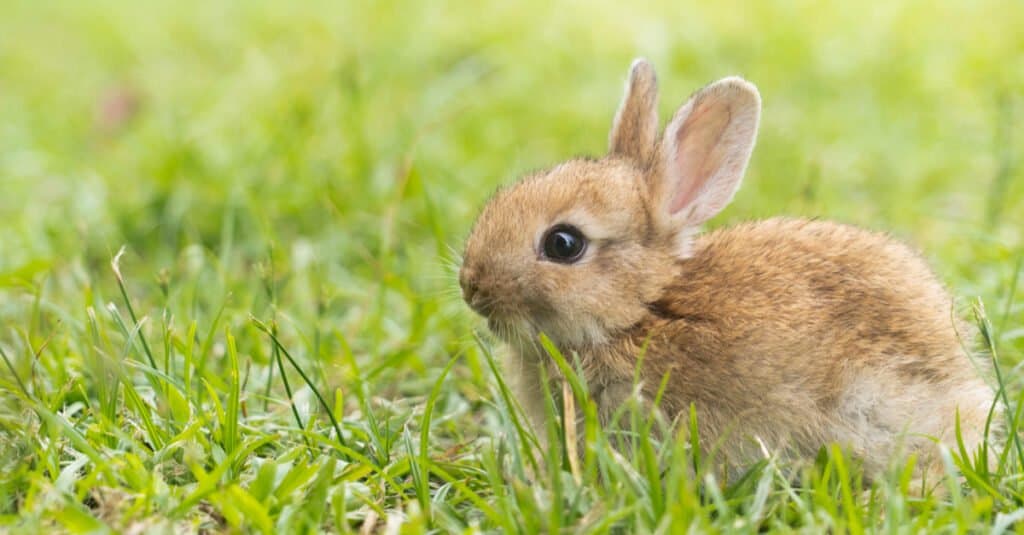

Infant Horse: Foal
A baby horse is known equally a foal. Foals typically need to kickoff with their mother's milk. By the time they are three to four months former, the digestive tract of the infant horse has matured enough to swallow fiber-based foods like pellets. A horse foal typically lives in a stable and is taken care of by its owner.
Baby Tiger: Cub
A infant tiger is known as a cub. These tiger cubs alive with their mother until they are two years old. They typically nurse until they are 24 weeks (about five to six months) old before their female parent brings them casualty to eat. Tiger cubs are non able to hunt for themselves until later they are 1.v years quondam.
Baby Trick: Kit
Kits are babe foxes. Unremarkably, a play a joke on will eat a combination of pocket-sized mammals and fresh produce. To nourish their babies, the mother fox volition regurgitate their prey to make information technology easier for them to eat. Though each species is unlike, forested areas are a preferred play a trick on habitat.
Infant Dog: Puppy
Dogs give nascence to puppies. Though there are many dissimilar breeds, all of them nourish their puppies with milk until they are one-time enough to chew their food at near six to eight weeks.
Baby Goose: Gosling
Goslings, the babies of geese, typically eat grass. However, the species determines exactly what else is in their diet. Nigh goslings crave supplemental feeding until they are v to 6 weeks old.
Infant Kangaroo: Joey
Joeys live in their mother's pouches until they are vi months old. The predominant nutrition of these beautiful babe animals consists of their female parent'due south milk and grasses. They only consume an herbivorous diet.
Infant Pig: Piglet
Piglets typically alive on farms until they reach machismo at five months onetime. They swallow a range of nutrient as omnivores, though they volition feed on their mother'due south milk until they are two months old.
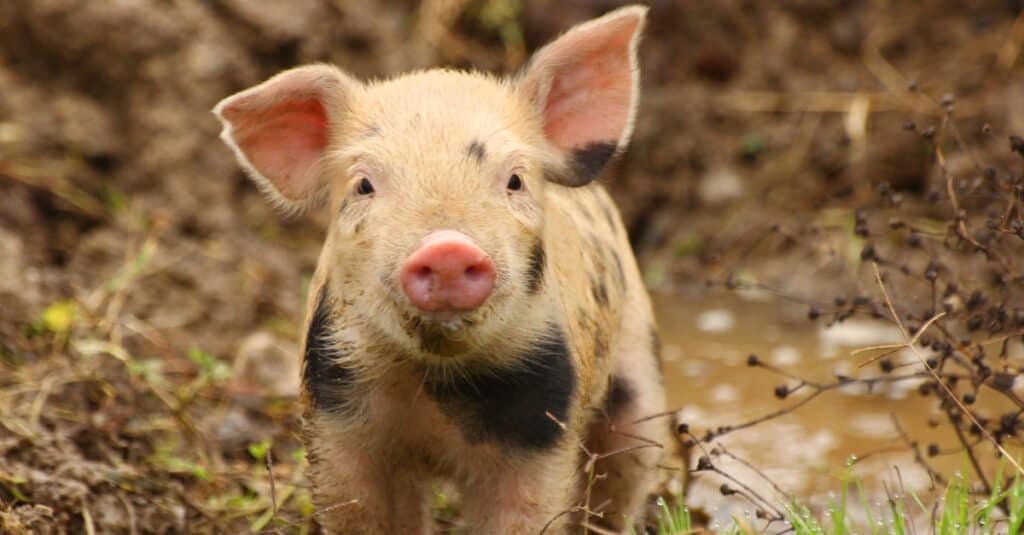

Baby Platypus: Platypup
Platypups, the offspring of the platypus, consume their mother's milk through pores on the chest, much in the aforementioned way that someone would beverage water from their easily. They only alive in the freshwater regions of Tasmania.
Babe Sheep: Lamb
The babies of sheep are lambs, and they can eat a steady diet of grass and forage plants without irritation to their digestive organisation. Frequently raised on a farm with their mother, lambs will drinkable their female parent'south milk, but it is possible to wean them at two weeks sometime.
Infant Swan: Cygnet
Cygnets, or babe swans, don't initially have to consume in their first few days of life. They will forage their natural habitat (including ponds and like areas) to find insects and local vegetation.
Baby Jellyfish: Ephyna
Though there are many breeds of jellyfish, babies – known as ephynas – eats larvae. They are but establish in the ocean, but their fragile country leaves them with many potential predators.
Baby Hummingbird: Chick
A baby hummingbird is known every bit a chick. These chicks beverage water and will eat regurgitated bugs and nectar from their mothers. The hummingbird babies don't unremarkably fend for themselves until they are nigh 3 weeks old and can start to fly from their nest.
Baby Mole: Pup
A babe mole, or a pup, needs its female parent'south milk. It often lives underground, looking for its worms and other bugs if it tin chase.
Baby Moose: Calf
The baby of a moose is chosen a calf, and they need mother's milk from birth to build upward their immune system for the first five months they are alive. After weaning, they'll maintain an herbivorous diet.
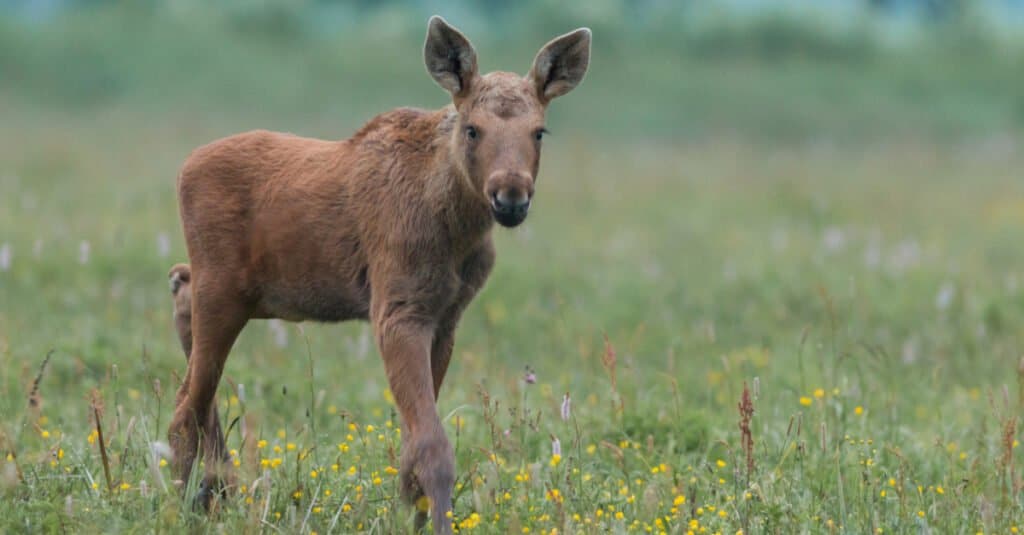

Babe Elephant: Calf
Elephant babies are called calves, and they'll drink their mother's milk for at to the lowest degree two years. They tin swallow plants as young as 5 months old, only information technology is not their main source of nutrients. Elephants oft live in Africa and Asia.
Baby Koala: Joey
Babe koalas, which are called joeys, will live in their mother'south pouch until they are 6 months old. They are born without hair, ears, or eyesight. They primarily alive in Commonwealth of australia.
Infant Otter: Pup
Babe otters, or pups, live with their mothers in dens, which must be in a secure location to protect them. They potable milk from their mother for the outset forty days before they showtime consuming plants and tiny fish.
Baby Baboon: Infant
The babies of baboons are called infants, and they stay with their mothers for about six months until they are weaned. They'll live with their mother in Africa or Arabia until they are two years old.
Baby Turkey: Poult
Poults, or baby turkeys, live in nests and cannot fly. They volition roost in trees with their mother when they are big enough to wing and consume whole grains.
Baby Toad: Tadpole
Equally a babe, toads live in the water every bit tadpoles. They emerge on land when they grow legs, and their tail goes away. Generally, tadpoles eat soft plant matter.
Baby Hedgehog: Piglet
Hedgehogs feed their baby piglets milk until they are eight weeks old. However, if you keep 1 equally a pet, they'll willingly indulge in moisture dog or cat nutrient.
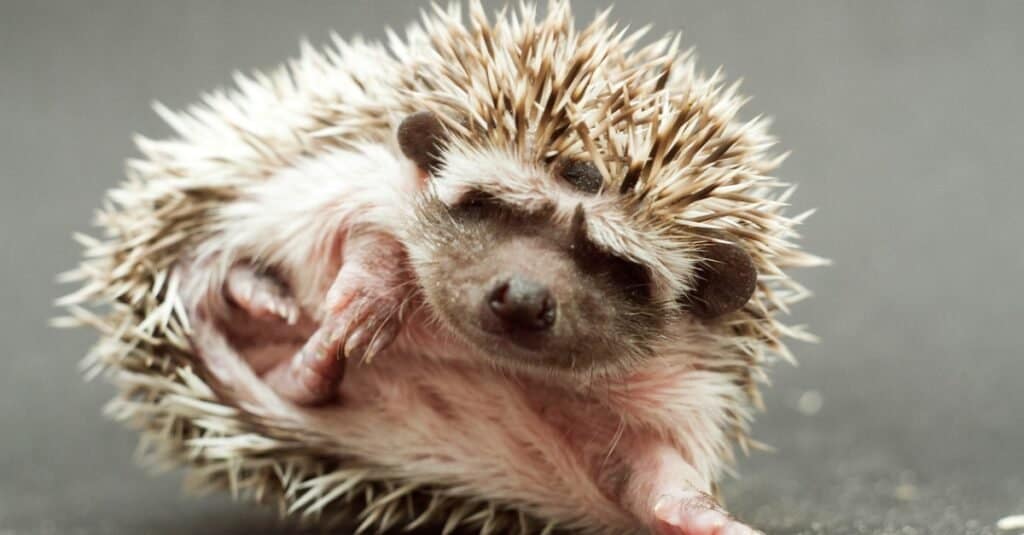

Baby Monkey: Infant
Infant monkeys – known as infants – live in tropical rainforests in the trees. Along with their mother'south milk, they'll also eat foods that their mother gives them as early every bit two weeks erstwhile.
Baby Mouse: Pinkie
A baby mouse often chosen a little finger, eats their mother's milk until they are 28 days old. After this age, they'll forage for crumbs, seeds, insects, and nuts equally nourishment wherever they are.
Baby Penguin: Chick
Penguins lay eggs to requite birth to their chicks. Rather than providing their immature with milk, they give their craven a secreted substance called crop milk, which is high in fat and created past a pouch in their pharynx.
Baby Rat: Pup
Baby rats, known as pups, will consume their mother's milk for the first three weeks of life before they eat the same every bit their mothers. Rats are found nigh anywhere, though they can also exist kept as pets.
Baby Mosquito: Tumbler
Baby mosquitos are known as tumblers. They live in the water and feed on algae.
Infant Hippopotamus: Calf
Baby hippos – or calves – primarily eat grass afterward they are three weeks old, only they'll continue to suckle for milk from their female parent for upward to viii months. They can even drink underwater.
Baby Pigeon: Squab
The babies of pigeons are called squabs, and they are given regurgitated food for the get-go few days after they hatch. They'll commencement eating fruits, seeds, and sometimes invertebrates afterward nine days.
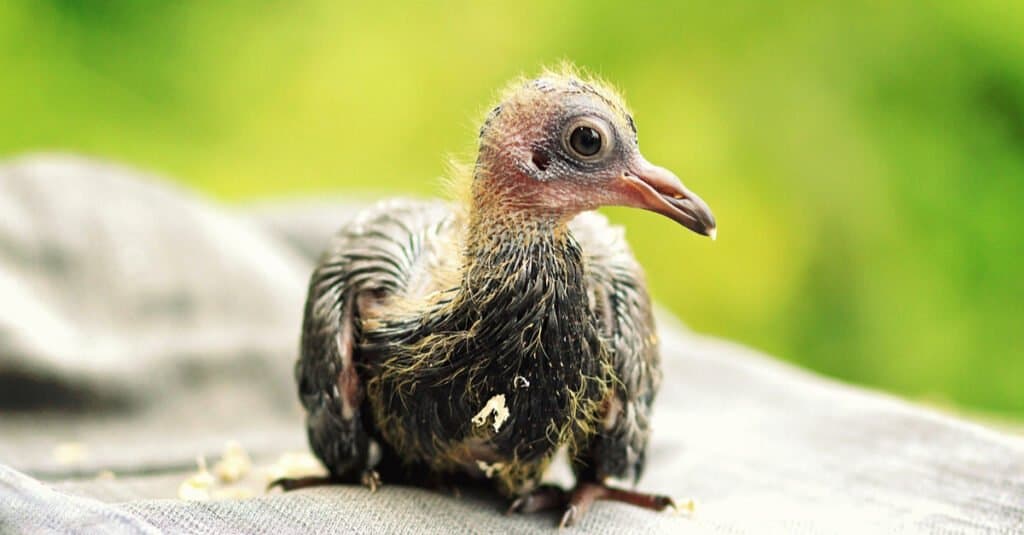

Baby Ape: Baby
Like most mammals, infant apes – just called babies – potable milk from their mothers. After they are weaned, the specific diet depends on the particular species.
Baby Bat: Pup
Baby bats, known as pups, are fed with regurgitated nectar from their mothers, too as milk. They'll likewise swallow mealworms.
Baby Snake: Snakelet
Snakelets, or infant snakes, are carnivorous, though the diet depends on the species. They are found all over the world, though this baby name applies to all of them.
Baby Deer: Fawn
Fawns are baby deer. They remain with their female parent to continue drinking her milk until they are near 12 weeks erstwhile. After, they will seek out fruit as their principal nutrient source.
Baby Bird: Hatchling
In full general, baby birds are considered hatchlings, unless the specific breed has a unlike proper noun. Birds come in all shapes and sizes, and they are found around the globe.
Infant Camel: Calf
Baby camels are called calves, and they mainly consume milk until they are 12-xviii months old. Mothers continue to produce for a while after that every bit long as the dogie continues to nurse.
Baby Butterfly: Caterpillar
Caterpillars are considered to exist the baby phase of a butterfly. They eat leaves and wrap themselves inside a cocoon to brand the transition.
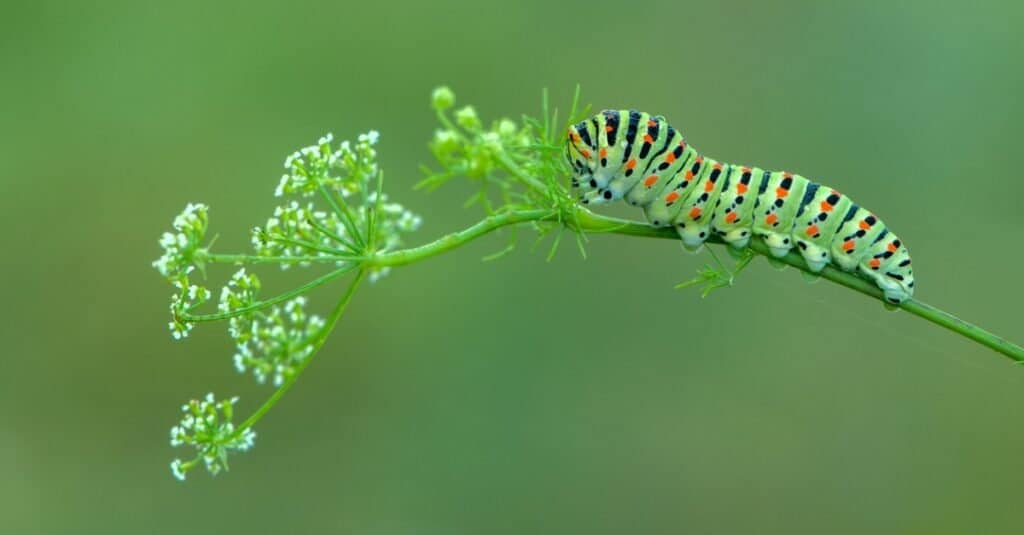

Baby Crocodile: Hatchling
Babe crocodiles, which are born from an egg, are called hatchlings. They'll start eating insects, fish, and modest frogs at an early historic period, though their pocket-size body prevents them from taking down bigger prey.
Baby Eagle: Eaglet
A babe eagle is called an eaglet. Even as a baby, these birds will outset eating raw meat on the first day of their life, and the male person is often the ane that nourishes them.
Babe Fish: Fry
The baby stage of a fish is chosen a fry, which is ready to eat on its own like a regular fish. Even with many different species of fish, the give-and-take "fry" is used to draw most of them.
Baby Owl: Owlet
A baby owl, also known as an owlet, is notable for the lack of mature plume. It relies on the mother to bring it meat, though any owlet that falls from the nest will not probable be cared for.
Babe Oyster: Spat
The reproduction bike of oysters brings spat, which comes after the larvae attach to a surface to grow. They survive mainly on phytoplankton.
Baby Panda: Cub
Like many bears, the baby of a panda is chosen a cub. Mothers often only feed the strongest cub when she has two or more babies, and they cannot consume bamboo until they are a year old.
Baby Ferret: Kit
Baby ferrets are called kits, which count any ferret nether a year old. Every kit is born with white fur, and they like to eat fresh meat and their mother's milk.
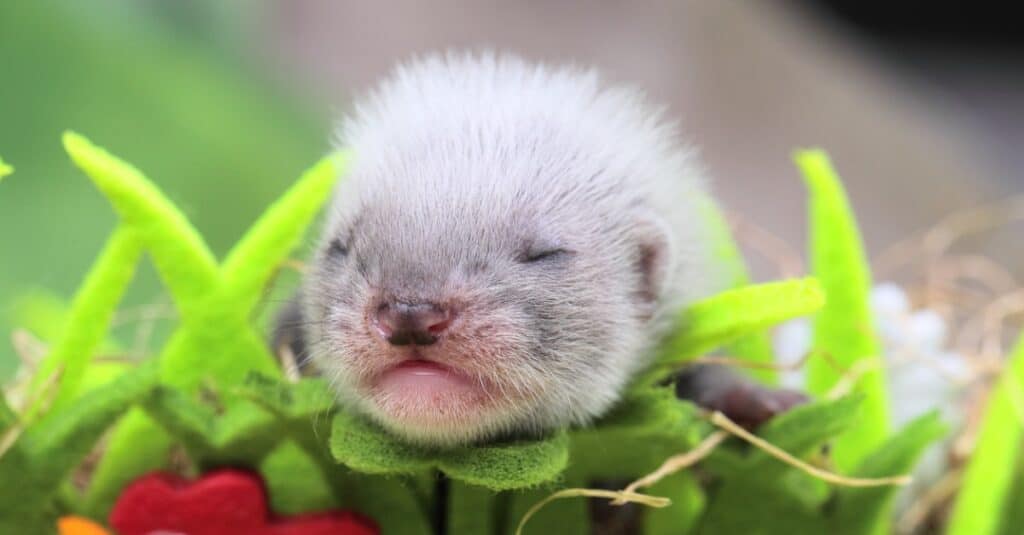

Infant Fly: Maggot
The baby animal name for a fly is a maggot. Maggots eat excessively, and they will even go after other maggots to nourish themselves.
Baby Grasshopper: Nymph
Earlier a grasshopper reaches adulthood, it is called a nymph. It reaches adulthood within about 11 months, though they don't develop their wings until that stage.
Baby Spider: Spiderling
Babe spiders are chosen spiderlings. Up to three,000 eggs are laid at a time to produce these offspring that accept to fend for themselves upon existence born.
Next Up: Rug Beetle Eggs: What Are The Signs?
Source: https://a-z-animals.com/blog/52-baby-animal-names-the-big-list/
Post a Comment for "When Too Animals Make Babys What Is It Called"